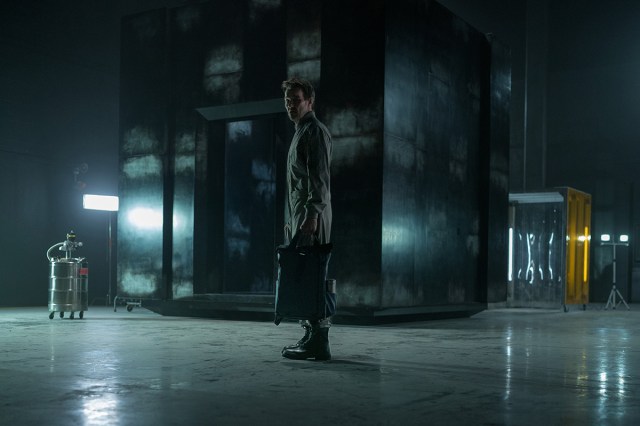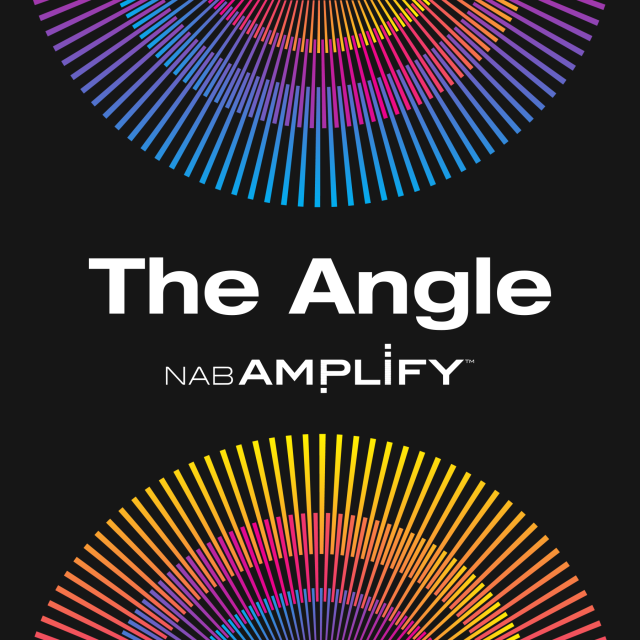
TL;DR
- Andy Jarosz, virtual production supervisor at Smash Virtual Studios, compares VP to digital cinematography, which took a decade to fully become the norm.
- As the technology continues to mature, “more and more productions can see themselves utilizing it,” Jarosz says, highlighting new tools such as ARRI’s Virtual Twins, which allows ARRI lights to be incorporated into Unreal Engine.
- “If you’re going to be shooting in someone’s living room,” he says, it makes much more sense “to just go film in a living room. But if you want to shoot on Mars, it’s way easier to film on the LED volume.”
- Jarosz led three sessions at the Post|Production World training conference during NAB Show: “Cinematography on an LED Volume,” “Designing an Unreal Level for Virtual Production“ and “When Does Virtual Production Make Sense?“
Virtual production has come a long way just this past year and the NAB Show 2024 attendees want more information about ways to do actual work in this exciting arena. Andy Jarosz, virtual production supervisor at Smash Virtual Studios, led three sessions at the Post|Production World training conference designed to enhance attendees’ understanding about this multifaceted topic.

Jarosz says that Smash has become the largest LED studio in the Chicago area since its 2022 founding and that it’s providing services for a large number of projects, primarily TV shows.
The 18,000-square-foot building near downtown offers a variety of LED screen configurations and Unreal Engine playback services for high-end commercials, TV, and film, including Dark Matter for Apple TV+, Chicago PD (NBC) and a number of feature films. In his capacity at the company, he has become expert in the technology and workflow of virtual production and his sessions will impart much of this acquired knowledge.
Cinematography on an LED Volume
People in the film industry “don’t always like new things,” he offers, observing that it takes a long time for new technologies to become adopted. Likening virtual production to digital cinematography, he says that novel technologies are frequently met with disbelief. “People just assumed it was a gimmick, “he says of the early examples of digital cinematography. “It took a decade to fully become the norm.
“As the technology matures” Jarosz continues, “more and more productions can see themselves utilizing it.” He says that the industry is arriving at a point now where cinematographers “understand that there are certain considerations when shooting on an LED volume — that you have to treat it in a specific way. But those considerations are not the end of the world. That those concessions are just technique and just process.”
He points to new tools, such as ARRI’s Virtual Twins of their lights that can be incorporated into Unreal Engine, “so now cinematographers are able to say, ‘I want a Sky Panel and I want it set to these settings inside the virtual space.’ And they’re going to get exactly what they expect. The tools are catching up.”
Further, he adds, “We’re going to be talking about things like exposure. We’re going to be talking about color science. We’re going to be diving into specifics about Unreal Engine because a lot of times, people just don’t have a good understanding as to what Unreal can do and what it can’t do.”
He’s also going to provide a whole section just on car process shots, which have been among the quickest type of work to be embraced for feature film and TV applications. “We’re going to be getting fairly technical into the process of virtual production and shooting against LED walls as a backdrop. “
Designing an Unreal Level for Virtual Production
The core of this approach starts with creating elements within Unreal Engine that can interact with camera attributes such as movement and optics. “There are specific nuances that you need to consider when you are working on an environment for virtual production specifically,” he cautions. “Unreal Engine is a gargantuan piece of software. It’s designed for massive teams of game developers to use. It’s not meant to make movies. And so, there are certain caveats to it — things that do and don’t work on an LED volume.”
His experience suggests it’s easier for people from the film industry to pick up Unreal Engine than the other way around. “The games industry works in a completely different way,” he notes.
“They have completely different requirements. And they work to different standards. Games have all different kinds of art styles. They can be cartoony. They can be realistic. They can be anything in between. Film has one art style. It has reality. And anything beside that is just not acceptable.”
“Often, what we’re finding as a studio is that we’ll get environments and levels designed from outside companies that aren’t used to creating content for this specific use,” he explains.
“Then we need to go in and redo a bunch of stuff, redo a bunch of settings. Or they’re just not constructed in a way that’s conducive to filming. It’s about communicating those requirements that we have as a stage and going through all of those little nuances and making sure that the levels that people are designing are up to scratch when it comes to a more cinematic workflow.”
When Does Virtual Production Make Sense?
Jarosz breaks down where this powerful technology actually benefits a production and when it’s just unnecessary.
These are the types of questions Jarosz fields as part of his job. “If you’re going to be shooting in someone’s living room,” he says, it makes much more sense “to just go film in a living room. But if you want to shoot on Mars, it’s way easier to film on the LED volume.” Between those two [extremes] is the diverging place at which utilizing the services of a company like Smash does or does not make financial sense.

Why subscribe to The Angle?
Exclusive Insights: Get editorial roundups of the cutting-edge content that matters most.
Behind-the-Scenes Access: Peek behind the curtain with in-depth Q&As featuring industry experts and thought leaders.
Unparalleled Access: NAB Amplify is your digital hub for technology, trends, and insights unavailable anywhere else.
Join a community of professionals who are as passionate about the future of film, television, and digital storytelling as you are. Subscribe to The Angle today!
Jarosz will provide some success stories exemplifying how the use of a virtual production environment (which obviously involves some relatively significant expenditure) has proven cost effective for specific projects, such as saving the cost of company moves when a show needs to shoot six locations in a day or making the most of a situation where a celebrity can only offer an hour or two to a production.
“These are all niche use cases that virtual production can solve and we’re going to dive into all of them,” he says in anticipation of his exciting presentations. “We’re also going to go over specific budget comparisons: shooting scenes practically versus on an LED volume to show cost breakdowns as to what people should expect when they book an LED stage.”
Anyone interested in getting into virtual production or understanding more about the nuts and bolts of the process, should consider adding Jarosz’s sessions to their NAB Show calendar.

